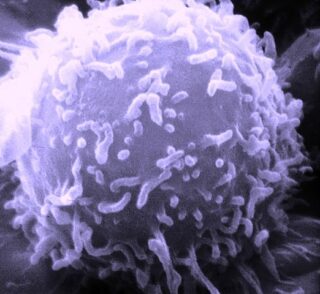 Since little is known about the potential harm, if any, to people who care for a pet that is receiving chemotherapy, unnecessary exposure to chemotherapy drugs should be avoided.
Since little is known about the potential harm, if any, to people who care for a pet that is receiving chemotherapy, unnecessary exposure to chemotherapy drugs should be avoided.
Chemotherapy drugs are given to destroy cancer cells. While these drugs work on cancer cells, they may also affect normal cells. This causes some of the side effects some people and animals experience after treatment.
Exposure to small amounts of chemotherapy drugs over a long period of time may prevent hazards to people who are not receiving the drugs for cancer treatment such as doctors, nurses, and pharmacists who prepare, transport, or administer the drugs.
Using proper techniques when handling, administering, or disposing of chemotherapy drugs will maximize the effect on the pet and minimize the risk to the caregiver.
Handling of Chemotherapeutic Medications
- Always wear gloves when handling your pet’s medication, especially if tablets are cut
in half. - Make sure the animal swallows the medication and does not spit it out.
- Store the pet’s medication away from food areas and in its original container.
- After use, dispose of gloves in a closed plastic container like a zip-lock bag or a sealed plastic box.
- Wash hands after removing gloves.
- Pregnant women should not handle chemotherapy medication.
- Keep all medication, containers, and waste away from children.
Disposal of Contaminated Bodily Waste
- Always wear gloves when coming in contact with pet waste products such as feces, urine, or vomit.
- Dispose of feces by flushing down the toilet.
- Clean up household areas that have been soiled with vomit, feces, or urine with household cleaning products like bleach or Lysol.
- Dispose of soiled paper towels in a closed plastic container.
- Rags or towels used should be laundered separately from other laundry.
- If clothes, bedding, throw rugs, etc. are soiled, launder them separately as previously discussed.
- For cats, clean the litter box often. Remove feces and flush down the toilet. Dispose of litter in a closed, plastic container or sealed plastic bag. Keep children away from the litter box.
- For dogs, leash animals to one area of the yard to decrease the exposure of the yard to contaminated waste. Clean up fecal material as soon as possible as stated above. Keep family, visitors, and other pets away from this designated area.
Duration of Precautionary Measures
The precautionary measures stated above should be continued during therapy and 2-3 days after the animal has received the last dose. This 2-3 day time period is approximately how long it takes for the drug to be eliminated from the animal’s body.
Photo source: “SEM Lymphocyte” by Unknown photographer/artist (False color modifications made by myself–DO11.10) – Dr. Triche National Cancer Institute. Licensed under Public Domain via Wikimedia Commons.
Information source: Info taken from the University of Wisconsin – Madison Veterinary Medical Teaching Hospital Pharmacy.
